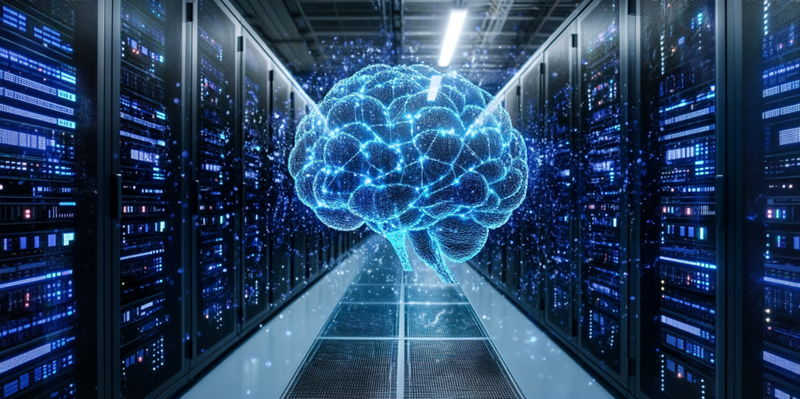Artificial intelligence (AI) has become a cornerstone of modern technological advancement, propelling innovations in numerous sectors. Yet, as AI systems, particularly large language models like GPT-3, proliferate, they exert significant pressure on environmental resources, notably water. Recent research underscores that the water consumption of AI data centers is far greater than previously assumed. This revelation calls for urgent sustainable strategies to balance technological progress with environmental stewardship.
Understanding the Water Footprint of AI
Initial Underestimations and Recent Revelations
Initial estimates in 2020 suggested that handling 10 to 50 GPT-3 queries required just one 500ml bottle of water. However, contemporary research conducted by the University of California, Riverside, has drastically revised these figures, indicating that the actual water consumption should be quadrupled, amounting to two liters for the same activity. This significant recalibration reflects the massive resource demand of AI operations, which often went underreported.
Researchers, led by Professor Shaolei Ren, discovered that previous figures grossly underestimated the energy and water requirements of AI data centers. Using updated data from Microsoft’s 2023 findings, they shed light on the substantial environmental footprint linked to AI systems. This freshly revealed information has stirred concerns among environmentalists and the tech community alike. Such revelations demand not only a reassessment of current practices but also immediate implementation of sustainable methods to mitigate further environmental harm.
The Role of Data Centers in AI
Cooling and Power Generation Demands
AI data centers are complex infrastructures consisting of extensive computer networks that require vast amounts of energy. A significant portion of this energy transforms into heat, necessitating comprehensive cooling systems. These cooling systems, often employing evaporative methods, consume enormous volumes of clean water. Thus, ensuring efficient operation demands sophisticated cooling and substantial water use.
The U.S. houses over 5,000 data centers, each representing a hub of energy conversion into heat. To mitigate overheating and maintain optimal performance, these centers deploy advanced cooling technologies. However, the resource-intensive nature of these cooling processes underscores a pressing need for innovation to curb environmental degradation. Unchecked, the rising demand for energy and water could soon outstrip the capacities of existing infrastructures and natural resources, highlighting the urgency for alternative solutions.
Escalating Water Use by Tech Firms
Leading technology companies like Microsoft, Google, and Meta acknowledge a dramatic rise in their data centers’ water usage. In 2023, Google reported using 24,227 megaliters of water, triple the amount consumed by Microsoft. These giants are undertaking initiatives to achieve water-positive status by 2030, aiming to restore water to natural ecosystems. Nonetheless, the effectiveness of these efforts in replenishing water where it is most needed faces critical scrutiny.
Environmental critics argue that while these restoration initiatives are a step in the right direction, they might not address localized water scarcity issues. The geographical relevance of returned water is crucial, as it may not benefit the regions most impacted by data centers’ consumption. Therefore, tech firms must adopt more nuanced strategies to ensure their environmental restitution efforts have a meaningful impact. In balancing technological growth with environmental needs, companies will also need to engage in wider collaborations that factor in local ecological conditions.
Sustainable Solutions and Future Directions
Innovations in Cooling Technologies
In response to the alarming water consumption rates, the tech industry is exploring alternative cooling technologies. Air-cooling methods and AI-powered efficiency tools are among the promising solutions being tested. These innovations aim to reduce the dependency on water while maintaining the operational effectiveness of data centers.
Air-cooling systems, for instance, represent a less water-intensive alternative. Similarly, leveraging AI to optimize data center operations can lead to significant reductions in energy and water use. These advancements, however, require widespread adoption and further refinement to meet the growing demands of AI technology sustainably. Tech companies are exploring how to fine-tune these technologies to ensure minimal disruption and maximum efficiency, both of which are critical for widespread implementation.
Policy and Infrastructure Adjustments
Recognizing the significance of data centers beyond technological realms, the UK is considering designating them as critical national infrastructure. This classification would align data centers with essential services like healthcare and emergency response, warranting additional governmental support to withstand disruptions from cyber-attacks or severe weather conditions.
Policy adjustments could play a pivotal role in driving sustainable practices in the AI and tech industry. By incentivizing reduced water consumption and encouraging the adoption of eco-friendly technologies, governments can facilitate a balance between technological growth and environmental preservation. Such policies would not only encourage innovations but could also set industry standards that ensure long-term sustainability.
The Path Forward
Collaborative Efforts for Sustainability
Artificial intelligence (AI) has emerged as a key player in driving modern technological innovation across various industries. Large language models like GPT-3 exemplify the rapid advancements in AI. However, this progress comes with a significant environmental footprint, particularly in terms of water usage. Data centers that support AI systems consume substantial amounts of water, far more than previously estimated. These facilities use water for cooling the vast number of servers required to operate and train AI models. Given the increasing demand for AI, this overconsumption of water poses a serious environmental challenge.
Recent studies reveal that the environmental cost of running these advanced AI systems is much higher than initially thought. For instance, the cooling processes essential for data centers result in significant water expenditure, highlighting an urgent need for sustainable practices. As AI continues to develop and become more integral to various sectors, it is crucial to devise strategies that mitigate its environmental impact. Balancing technological advancement with responsible resource management is essential for sustainable growth.

